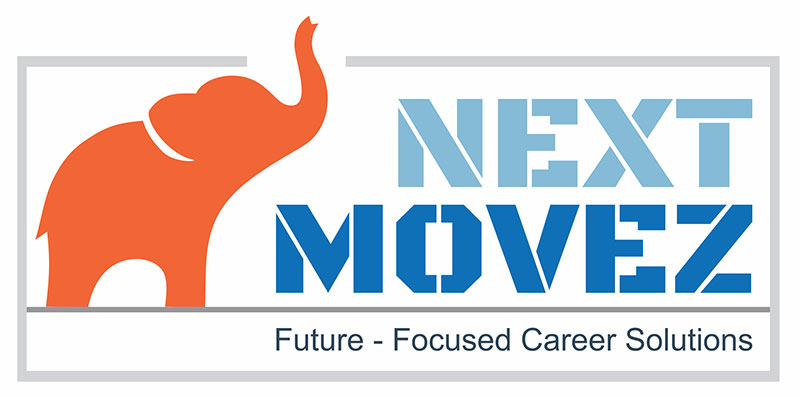By Preethi Durga, a career strategist and education innovator.
Ravi, a mid-level engineer, felt stuck despite getting promotions every year. On paper, his career looked perfect—but every Monday morning, he dreaded logging in. He wondered, “Am I making the right move if I switch?” and “What if I can’t find something better?” Thinking about leaving a job can feel exactly like standing at the edge of a cliff—exciting, yes, but nerve-wracking too.
I’ve spoken to many professionals—freshers, mid-level managers, even senior leaders—who are talented, hardworking, and ambitious. Yet, when it comes to deciding how to switch jobs, they freeze. It’s not a lack of confidence; it’s the process that feels heavy and overwhelming.
Here’s the truth: switching jobs isn’t just about sending out resumes or chasing opportunities. It’s about clarity, preparation, and building confidence in your decisions. And whether it’s IT or any other sector, the steps to a successful job switch remain the same.
1. Start With Your “Why”
One of the biggest mistakes I see is people thinking, “I just want to leave my current job,” without really understanding why.
Ask yourself: why do you want to switch? Is it for better growth, higher pay, a healthier work environment, or a complete career shift? Or maybe it’s simply because you feel stuck and uninspired.
Here’s where the Career Clarity Compass™ comes in. Instead of generic journaling, track your thoughts across six key aspects:
- Values – What truly matters to you in work and life?
- Motivators – What drives you to do your best?
- Strengths – What are you naturally good at?
- Preferences – What work style or role energizes you?
- Environment – What kind of culture or team fits you best?
- Impact – How do you want your work to make a difference?
Create a simple journal or spreadsheet and note your reasons, fears, and observations for each area. Over time, patterns emerge—you’ll start seeing what truly matters to you, making the next steps toward switching jobs far less stressful and much more intentional.
2. Take Small, Practical Steps
Many people think switching jobs means quitting today and applying everywhere tomorrow. That’s the fastest way to feel overwhelmed.
Instead, treat it like a project. Break it down: update your resume, optimize your LinkedIn profile, and research companies. Even dedicating 30 minutes a day to applications or networking makes a huge difference over a few weeks.
Take Priya, a software tester, for example. She spent just 20 minutes daily for a month updating her skills and reaching out to contacts. By week 5, she already had two interviews lined up—all without feeling stressed or rushed.
For those wondering how to switch jobs in the IT sector, small actions like completing a relevant certification or contributing to open-source projects can significantly strengthen your profile. These incremental steps build confidence, reduce panic, and make the whole process manageable.

3. Map Out Your Target Roles
It’s easy to apply to multiple jobs randomly, but that rarely works. If your goal is to switch jobs successfully, focus on roles that truly match your skills and ambitions.
Ask yourself:
- “Which skills give me energy vs. drain me?”
- “Which environments help me thrive?”
- “Where do I see myself in 1–3 years?”
- “What skills do I want to use daily?”
Use these answers to create your Best-Fit Career Zone™—the intersection of your strengths, motivators, and preferred work environment. Then make a shortlist of roles and companies that fall within this zone. Look beyond salary—consider culture, work-life balance, growth opportunities, and leadership.
For example, I met a professional who wanted to move from a backend developer role to product management. Instead of blindly applying, she researched the skills needed, networked with product managers, and took short online courses. Within six months, she landed a role that was both challenging and fulfilling—perfectly aligned with her Best-Fit Career Zone™.

4. Practice Interviewing and Storytelling
Switching jobs isn’t just about qualifications—it’s about how you present your experience and potential. Many candidates know their skills but stumble in interviews because they haven’t practiced articulating their story.
Take Ananya, a mid-level HR executive, for example. When she decided to move from generalist HR to talent acquisition, she realized that knowing her skills wasn’t enough—she needed to tell her story effectively in interviews. She spent time framing her experiences using real examples, rehearsing answers aloud, and explaining how her past HR work translated to recruitment success. Within a month, she walked into two interviews confident and prepared.
Here’s a framework that works: STAR (Situation, Task, Action, Result). Structure your answers around these four elements:
- Situation – What was the context or challenge?
- Task – What was your responsibility?
- Action – What did you do to address it?
- Result – What was the outcome or impact?
But don’t stop there. According to Career Clarity Compass™, your story should show not just what you did, but how you think. Reflect on challenges you’ve faced and what you learned from them.
Try this in practice: rehearse your answers aloud, record yourself, or do mock interviews with a friend. Focus on clarity, confidence, and real examples of your work. For anyone figuring out how to switch careers, framing transferable skills effectively can make all the difference—and help hiring managers see your potential beyond the resume.
5. Build Your Network Strategically
Even the best applications can go unnoticed without the right connections. Networking isn’t just about attending events or adding contacts on LinkedIn—it’s about meaningful conversations that give you insight and guidance.
Here’s a simple step-by-step approach:
- List 10 contacts – Mentors, former colleagues, or professionals in your target industry.
- Reach out with 2 questions – Ask for advice, insights about company culture, or tips on entering their field. Keep it concise and respectful.
- Follow up after 2 weeks – Check in politely if they haven’t responded or share any progress you’ve made.
You’ll be surprised how many opportunities emerge when you connect intentionally. For those wondering how to switch jobs, referrals can speed up the process and give you inside knowledge you won’t find on job boards.
6. Manage Stress and Stay Patient
Switching jobs can be stressful, especially when responses are slow or interviews don’t go as planned. It’s normal to feel anxious.
Here’s an interesting neuroscience insight: celebrating small wins—like completing an application, sending a networking email, or finishing a certification—triggers the release of dopamine, the brain’s “feel-good” chemical. This not only boosts motivation but also reduces stress and anxiety, helping you stay focused on the next step.
The key is to stay patient and structured. Stick to your timeline, maintain daily routines, and acknowledge every small achievement along the way.
Remember: one interview doesn’t define your potential, and one rejection doesn’t mean failure. Switching jobs is a journey, not a race, and celebrating progress keeps you moving forward with confidence.
7. Know When to Take the Leap
After preparation, practice, and research, you’ll reach a point where it’s time to make the move. Hand in your notice professionally, finish your responsibilities, and leave on good terms. Maintaining relationships is critical—today’s colleague could be tomorrow’s mentor or reference.
When you ask yourself, “Am I ready to switch?” the answer usually comes when your planning, confidence, and goals align. That’s when the leap feels intentional, not impulsive.
Here’s a simple practical checklist to ensure a smooth transition:
- Resignation Letter Template – Keep it professional, concise, and polite.
- Handover Plan – Document ongoing projects, deadlines, and key contacts for your replacement.
- LinkedIn Update Timeline – Decide when to update your profile or announce your move to your network.
Following these steps helps you leave gracefully while protecting your professional reputation and setting up for success in your next role.
Don't Wait for Perfect Timing
Many people hesitate to switch jobs because they want the “perfect opportunity” lined up. The truth is, there’s rarely a flawless role waiting around the corner.
Switching jobs is about progress, not perfection. Each interview, application, or networking conversation is a step forward. You learn, adapt, and refine your approach along the way.
Celebrate small wins—finishing your resume, landing an interview, or having a meaningful conversation with someone in your target industry. These steps build confidence and clarity.
Here’s a gentle reflection for you: “What opportunity might you miss if you wait another 6 months?” Thinking about it can help you take intentional steps today instead of waiting for a perfect moment.
That’s the real lesson in learning how to switch jobs—it’s not about waiting for perfection, but about trusting your preparation and moving forward with confidence.
In Conclusion
Learning how to switch jobs successfully isn’t about rushing—it’s about clarity, planning, and steady action. From defining your “why” to mapping target roles, building skills, practicing interviews, and networking strategically, every step matters.
At NextMovez, we understand that career transitions can be intimidating. That’s why we guide students and professionals through personalized career coaching, helping you understand your strengths, explore opportunities, and move forward confidently.
If you’re at the edge of a decision, don’t jump alone. At NextMovez, we help you take the leap with clarity, not fear. Join us for a session to map your path and move toward the career you truly deserve.






















